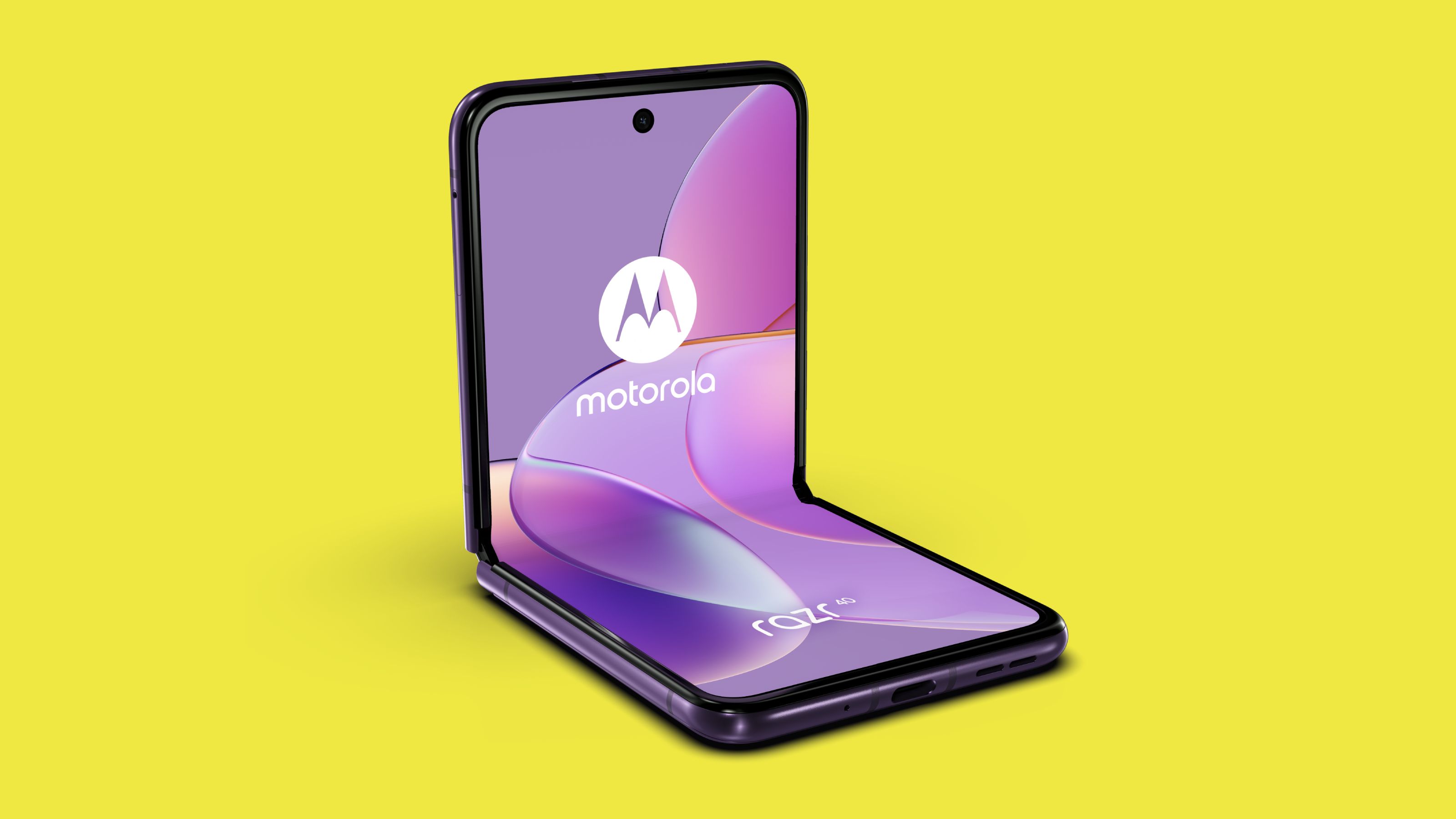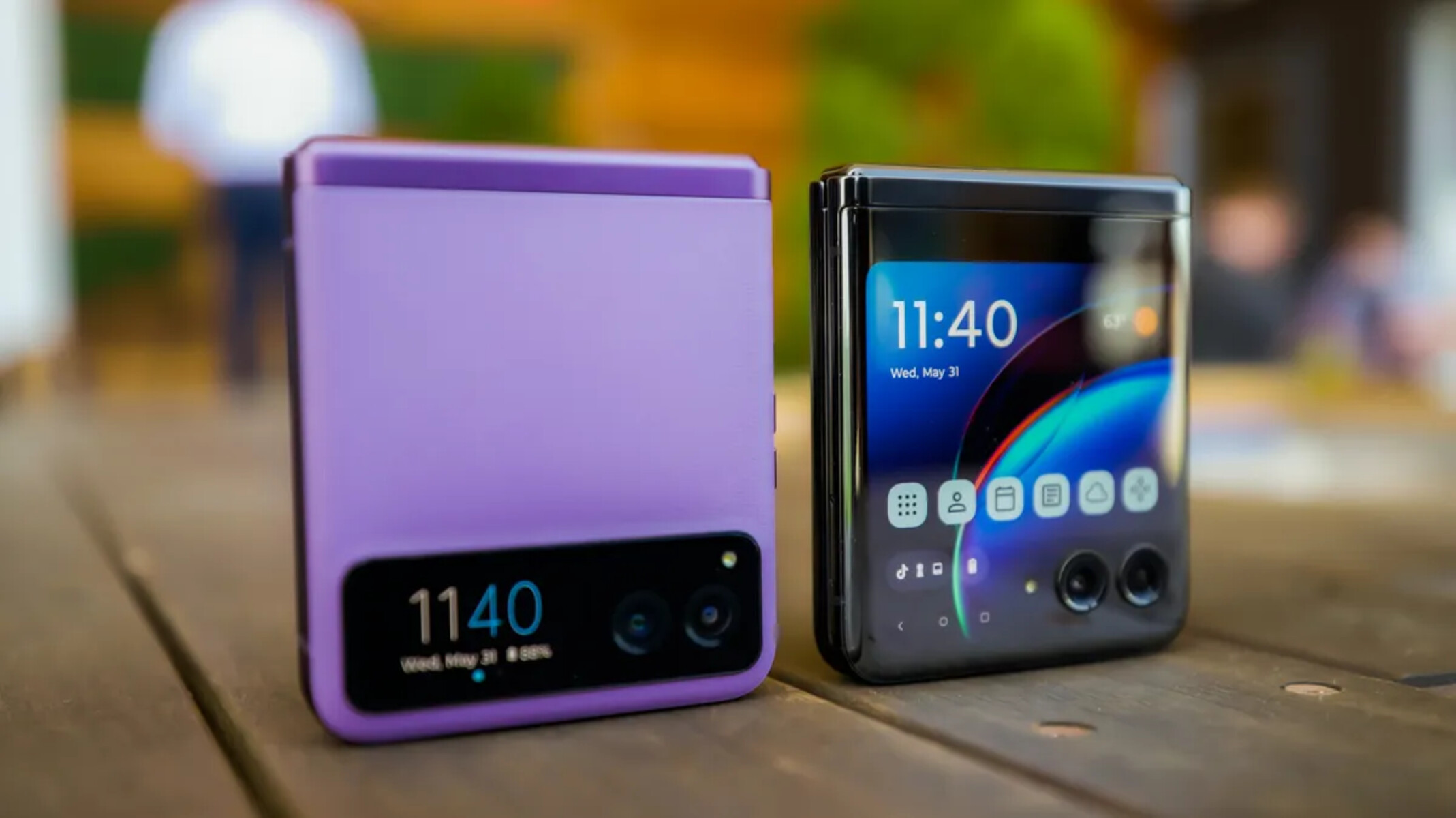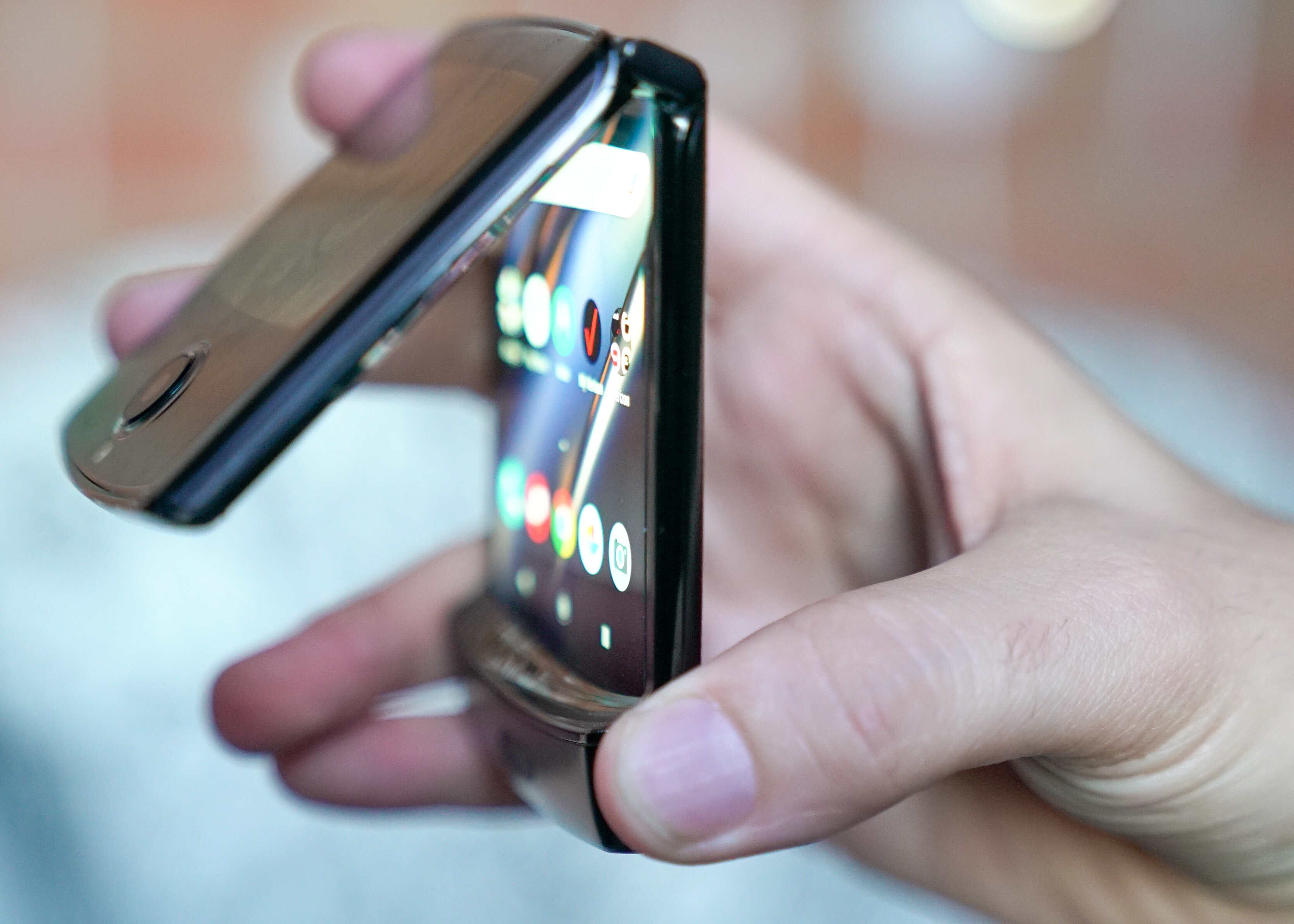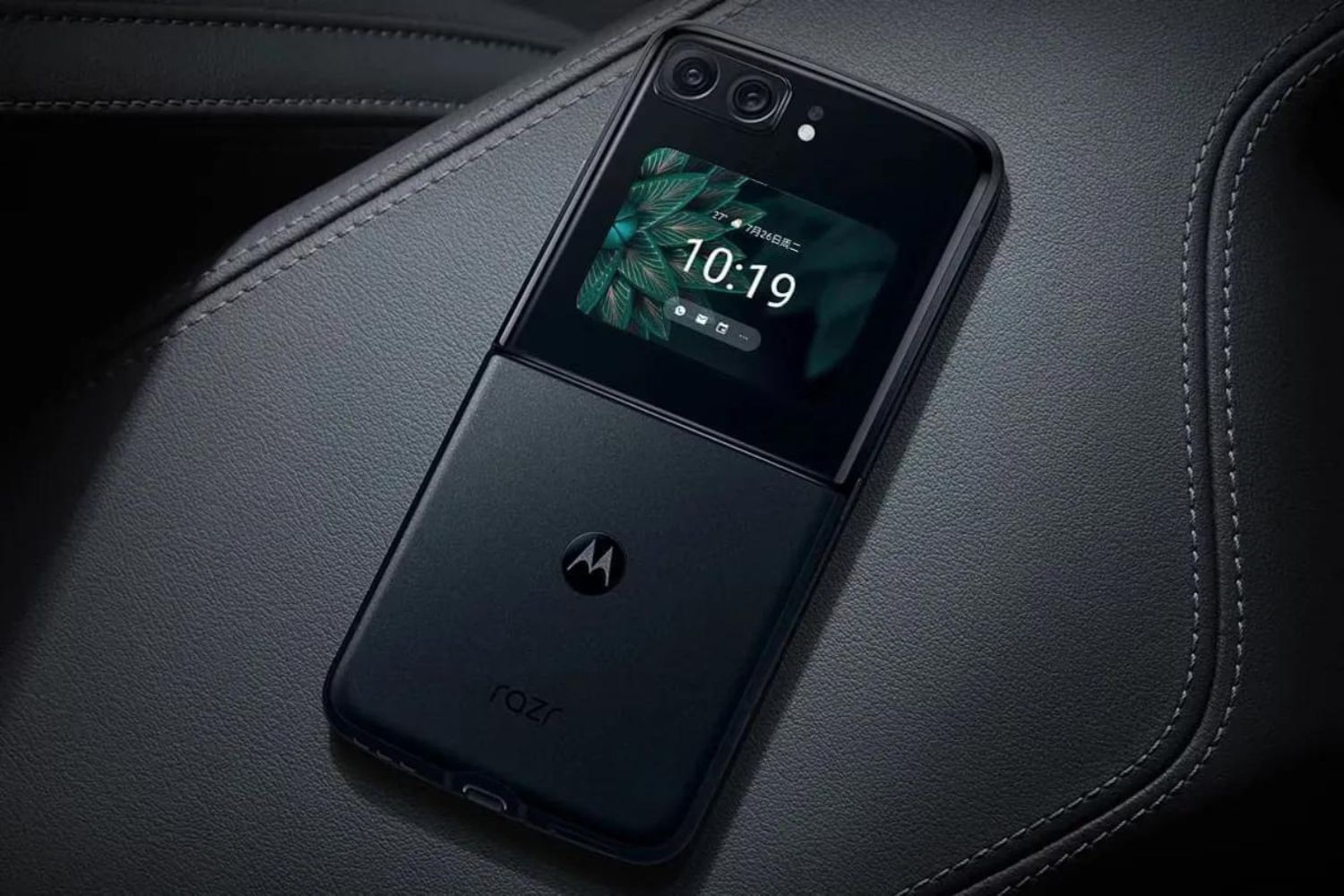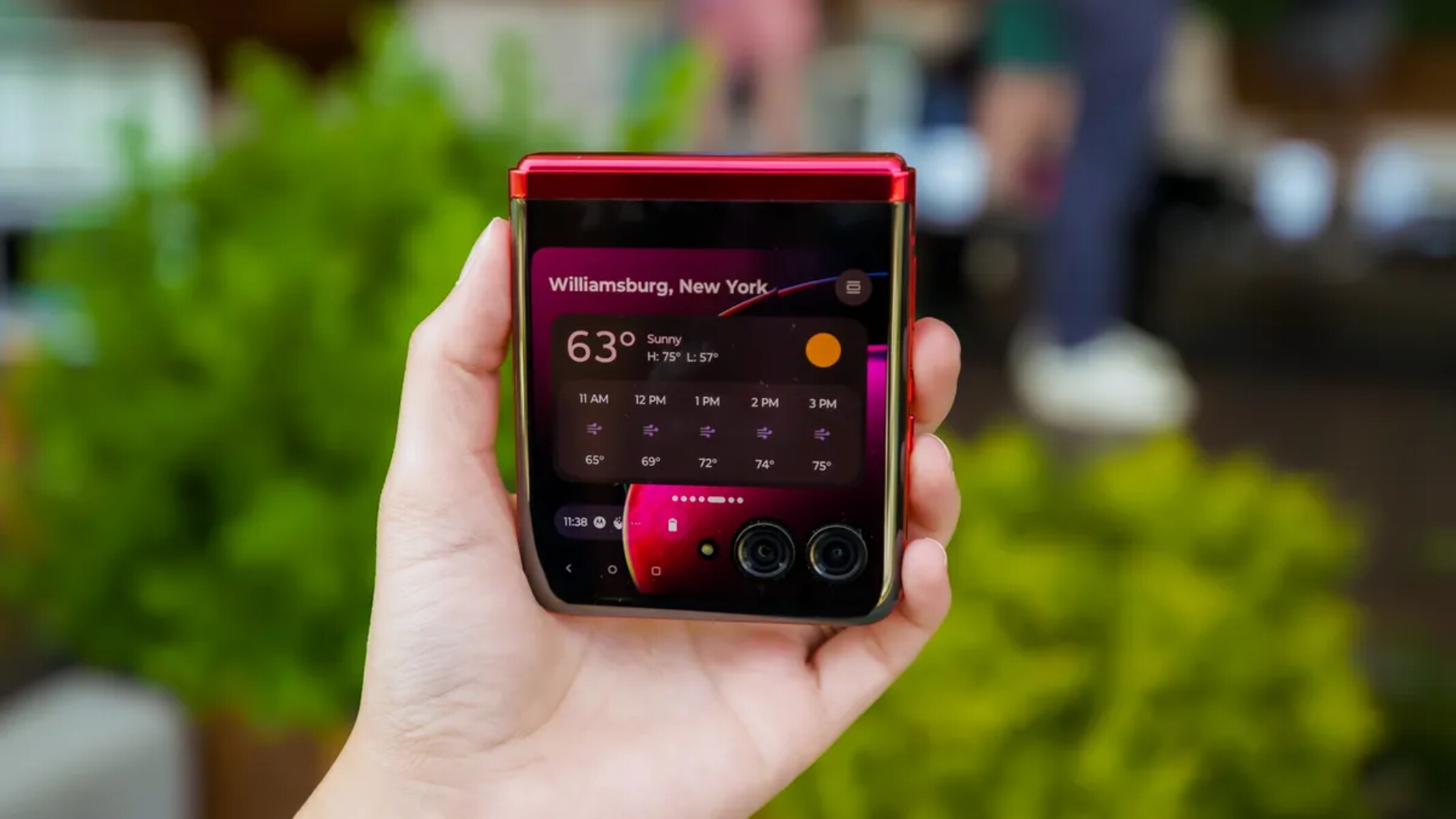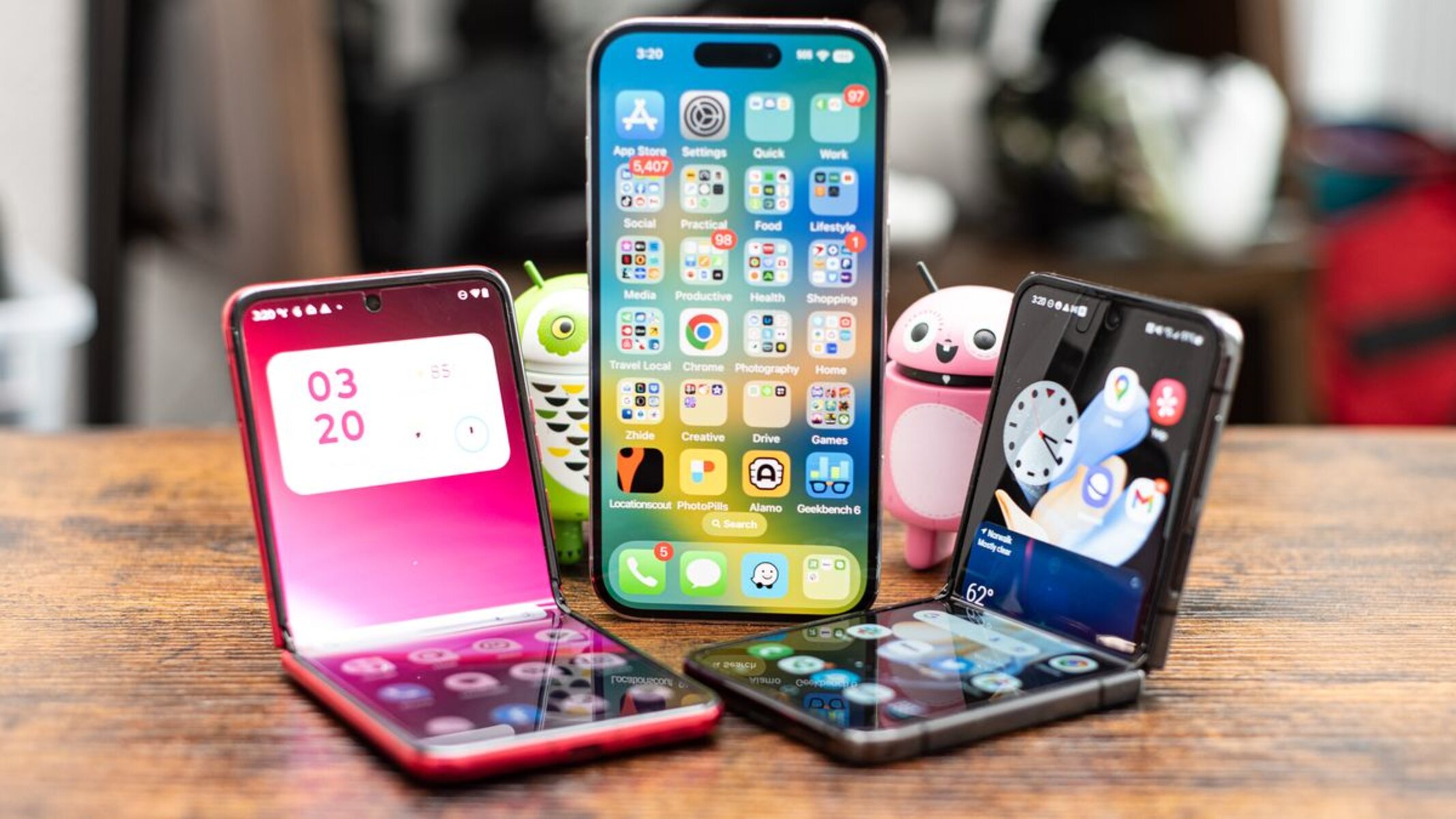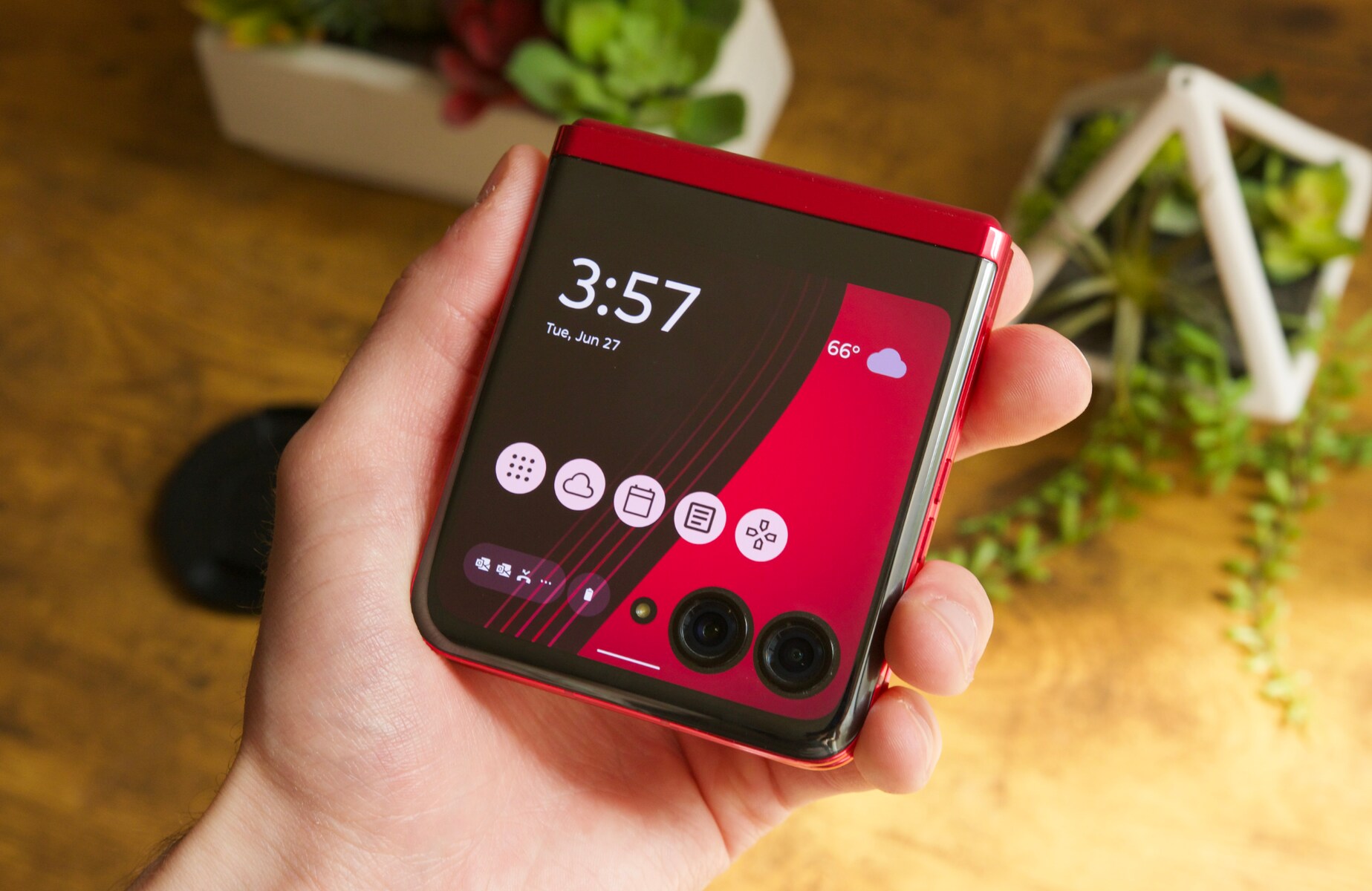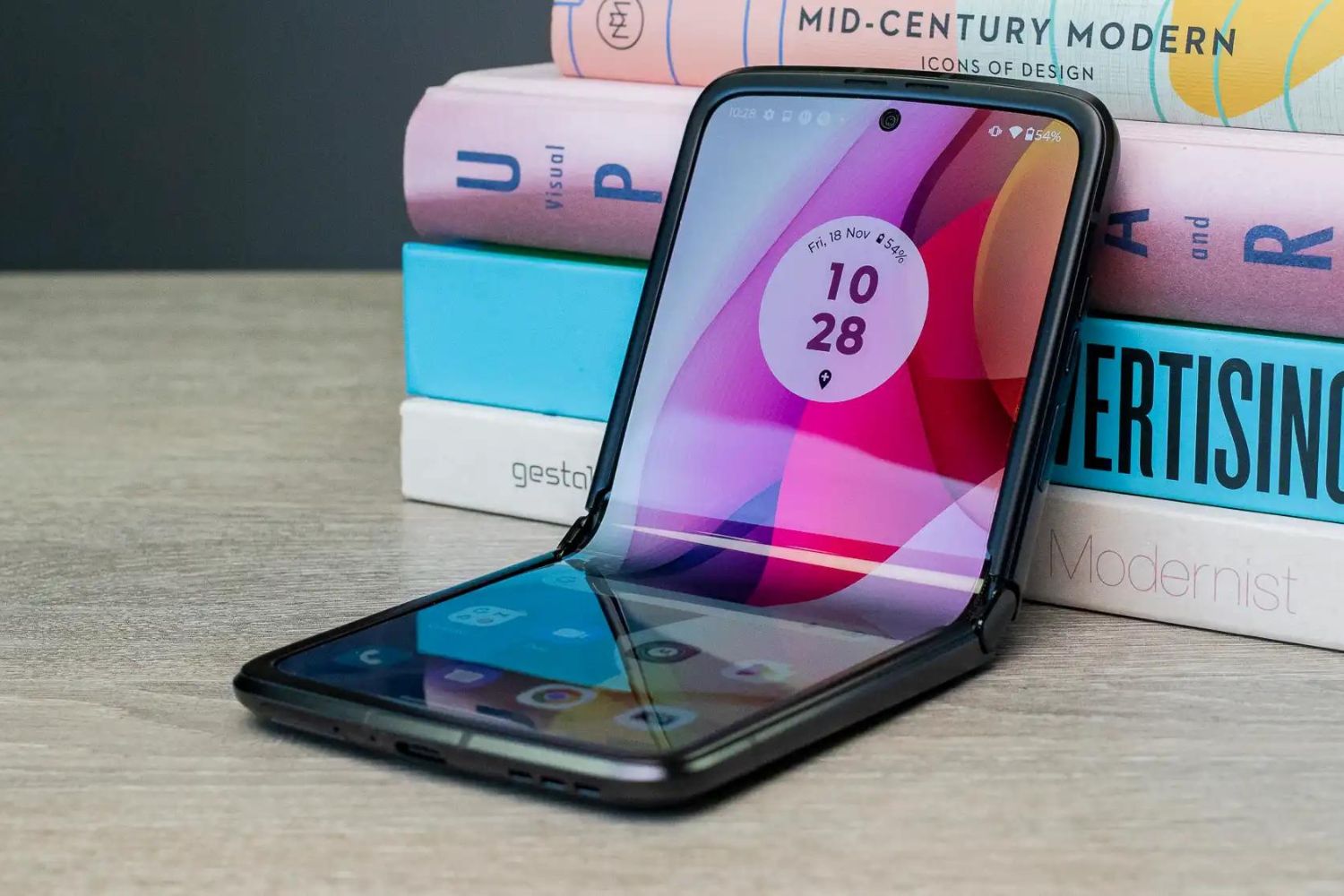Introduction
The Motorola Razr has made a striking comeback with its innovative foldable screen technology, captivating the tech world with its seamless blend of nostalgia and cutting-edge design. The material used in the construction of the Razr's foldable screen plays a pivotal role in its functionality, durability, and overall user experience. Understanding the material of the Motorola Razr foldable screen is essential for appreciating the engineering marvel behind this modern-day classic.
The choice of material for the foldable screen reflects the culmination of extensive research, development, and engineering expertise. It represents a harmonious fusion of advanced materials science and consumer-centric design, aimed at delivering a unique and reliable foldable device. Exploring the properties, characteristics, advantages, and potential limitations of this material provides valuable insights into the technological prowess and vision of Motorola in redefining the smartphone landscape.
As we delve into the intricacies of the material used in the Motorola Razr foldable screen, we embark on a journey to unravel the secrets behind its flexibility, resilience, and tactile appeal. By gaining a deeper understanding of this fundamental component, we gain a newfound appreciation for the intricate balance of form and function that underpins the Razr's revolutionary design. Let's embark on this enlightening exploration to uncover the magic woven into the very fabric of the Motorola Razr foldable screen.
The Material Used in Motorola Razr Foldable Screen
The material used in the construction of the Motorola Razr's foldable screen represents a remarkable feat of engineering and innovation. At the heart of this groundbreaking technology lies a flexible polymer known as plastic OLED (P-OLED). This cutting-edge material serves as the foundation for the Razr's foldable display, enabling it to seamlessly bend and flex without compromising visual quality or structural integrity.
P-OLED is a specialized form of OLED display that utilizes a plastic substrate instead of traditional glass. This fundamental departure from conventional display materials empowers the Razr to achieve its signature foldable design, allowing users to experience the convenience of a compact form factor without sacrificing screen size or usability. The inherent flexibility of P-OLED enables the Razr to fold and unfold with precision, offering a truly immersive and versatile user experience.
The utilization of P-OLED in the Razr's foldable screen is a testament to Motorola's commitment to pushing the boundaries of mobile device technology. This advanced material not only facilitates the seamless folding mechanism but also contributes to the overall sleekness and portability of the device. By leveraging the unique properties of P-OLED, Motorola has succeeded in creating a foldable screen that embodies both elegance and resilience, setting a new standard for modern smartphone design.
The integration of P-OLED in the Razr's foldable screen represents a significant milestone in the evolution of mobile devices, ushering in a new era of innovation and user-centric design. This material not only enables the Razr to achieve its iconic form factor but also underscores Motorola's dedication to delivering cutting-edge solutions that resonate with consumers seeking a harmonious blend of style and functionality.
In essence, the material used in the Motorola Razr foldable screen transcends traditional display technologies, offering a glimpse into the future of mobile device design. Its seamless fusion of flexibility, durability, and visual brilliance epitomizes the convergence of artistry and engineering, elevating the Razr to a league of its own in the realm of foldable smartphones.
Properties and Characteristics of the Material
The plastic OLED (P-OLED) material utilized in the construction of the Motorola Razr's foldable screen exhibits a diverse array of properties and characteristics that distinguish it as a pioneering material in the realm of mobile device technology.
-
Flexibility: One of the most striking attributes of P-OLED is its exceptional flexibility, which forms the cornerstone of the Razr's foldable screen. This material can bend and curve with remarkable ease, allowing the device to seamlessly transition between its folded and unfolded states. The inherent pliability of P-OLED ensures that the screen maintains its structural integrity even after countless folding cycles, offering users a reliable and enduring display solution.
-
Durability: Despite its flexibility, P-OLED boasts impressive durability, capable of withstanding the rigors of daily use without compromising on performance. This resilience is essential for ensuring the longevity of the Razr's foldable screen, as it empowers the device to endure the demands of modern lifestyles while retaining its visual appeal and functionality.
-
Lightweight Construction: The lightweight nature of P-OLED contributes to the overall portability and comfort of the Razr, making it an ideal companion for on-the-go usage. By leveraging this material, Motorola has succeeded in crafting a foldable device that seamlessly combines cutting-edge technology with effortless mobility, catering to the needs of contemporary consumers.
-
Vibrant Visuals: P-OLED is renowned for its vibrant and immersive visual capabilities, delivering stunning color reproduction and contrast to enhance the user experience. The material's ability to produce rich, true-to-life visuals ensures that the Razr's foldable screen captivates users with its striking display quality, whether in its folded or unfolded state.
-
Thin Profile: The thin and sleek profile of P-OLED contributes to the overall elegance and sophistication of the Razr, accentuating its modern aesthetic while maintaining a minimal footprint. This characteristic aligns with Motorola's vision of creating a foldable device that seamlessly integrates into the user's lifestyle, embodying a perfect balance of form and function.
In essence, the properties and characteristics of the P-OLED material encapsulate a harmonious blend of flexibility, durability, visual brilliance, and practicality, making it the ideal foundation for the Motorola Razr's foldable screen. This material not only elevates the device's functionality but also serves as a testament to Motorola's unwavering commitment to redefining the boundaries of mobile device innovation.
Advantages and Disadvantages of the Material
The plastic OLED (P-OLED) material employed in the construction of the Motorola Razr's foldable screen offers a host of advantages that underscore its significance in shaping the device's user experience. At the same time, it is essential to acknowledge the potential limitations associated with this innovative material.
Advantages
-
Flexibility and Versatility: P-OLED's exceptional flexibility enables the Razr's foldable screen to seamlessly transition between its folded and unfolded states, providing users with a versatile and adaptable device. This flexibility enhances the device's usability, allowing it to effortlessly conform to diverse usage scenarios and user preferences.
-
Enhanced Durability: The inherent durability of P-OLED ensures that the Razr's foldable screen can withstand the demands of daily use, including frequent folding and unfolding, without compromising its structural integrity. This durability contributes to the device's longevity, offering users a reliable and enduring display solution.
-
Visual Brilliance: P-OLED's vibrant visual capabilities deliver stunning color reproduction and contrast, enhancing the overall visual experience of the Razr's foldable screen. The material's ability to produce rich, true-to-life visuals ensures that users are treated to captivating and immersive display quality.
-
Lightweight Design: The lightweight nature of P-OLED contributes to the Razr's portability and comfort, making it an ideal companion for on-the-go usage. This lightweight design aligns with modern consumer preferences for devices that seamlessly integrate into their lifestyles without compromising on performance.
-
Innovative Form Factor: P-OLED's unique properties enable the Razr to achieve its iconic form factor, setting it apart from traditional smartphones and showcasing Motorola's commitment to pushing the boundaries of mobile device design. The innovative form factor of the Razr underscores its status as a pioneering device in the realm of foldable smartphones.
Disadvantages
-
Susceptibility to Scratches: While P-OLED offers impressive durability, it may be more susceptible to scratches compared to traditional glass-based displays. This susceptibility necessitates careful handling and maintenance to preserve the visual appeal of the Razr's foldable screen.
-
Complex Manufacturing Process: The production of P-OLED displays involves a complex manufacturing process, which may result in higher production costs compared to conventional display technologies. This complexity could potentially impact the overall cost of the device and its accessibility to a broader consumer base.
-
Limited Fold Lifespan: Despite its durability, P-OLED displays may have a limited fold lifespan, meaning that over an extended period of use, the material's flexibility and structural integrity could gradually diminish. This limitation underscores the need for ongoing advancements in foldable display technology to address longevity concerns.
In essence, while the advantages of P-OLED significantly enhance the user experience and design innovation of the Motorola Razr, it is important to consider the potential drawbacks associated with this pioneering material. By acknowledging both its strengths and limitations, we gain a comprehensive understanding of the material's impact on the Razr's foldable screen and its implications for the future of mobile device technology.
Durability and Longevity of the Material
The plastic OLED (P-OLED) material utilized in the construction of the Motorola Razr's foldable screen embodies a remarkable balance of durability and longevity, underpinning the device's resilience and enduring appeal. The inherent properties of P-OLED contribute to its ability to withstand the rigors of daily use, ensuring that the Razr's foldable screen remains a reliable and long-lasting component of the device.
The durability of P-OLED is a defining feature that sets it apart from traditional display materials. Despite its exceptional flexibility, P-OLED exhibits impressive resistance to damage, making it well-suited for the demands of a modern mobile lifestyle. Whether it's the daily folding and unfolding of the screen or the inevitable bumps and jostles encountered during everyday use, P-OLED stands resilient, maintaining its structural integrity and visual performance.
Furthermore, the longevity of the P-OLED material speaks to its enduring quality over time. Motorola has engineered the Razr's foldable screen to withstand extensive usage, ensuring that the material's flexibility and functionality remain consistent throughout the device's lifespan. This commitment to longevity aligns with the brand's dedication to delivering reliable and enduring technology that transcends fleeting trends.
The integration of P-OLED in the Razr's foldable screen represents a significant advancement in the pursuit of durable and long-lasting foldable devices. By leveraging the unique properties of P-OLED, Motorola has effectively addressed concerns related to the longevity of foldable screens, offering users a dependable and enduring display solution that adapts to their dynamic lifestyles.
In essence, the durability and longevity of the P-OLED material serve as a testament to Motorola's unwavering commitment to engineering foldable devices that not only push the boundaries of innovation but also stand the test of time. The Razr's foldable screen, supported by the enduring qualities of P-OLED, embodies a new standard of reliability and longevity in the realm of foldable smartphones, setting a precedent for the future of durable and enduring mobile technology.
Conclusion
In conclusion, the material used in the construction of the Motorola Razr's foldable screen, plastic OLED (P-OLED), represents a groundbreaking leap in mobile device technology. The seamless integration of P-OLED has enabled the Razr to achieve a harmonious balance of flexibility, durability, and visual brilliance, setting a new standard for foldable smartphones. The properties and characteristics of P-OLED, including its exceptional flexibility, durability, lightweight construction, vibrant visuals, and thin profile, underscore its pivotal role in shaping the Razr's innovative design.
The advantages of P-OLED, such as its flexibility, enhanced durability, vibrant visual capabilities, lightweight design, and innovative form factor, have redefined the user experience, offering a versatile and resilient device that resonates with modern consumers. However, it is important to acknowledge the potential limitations associated with P-OLED, including susceptibility to scratches, a complex manufacturing process, and a limited fold lifespan. By recognizing these considerations, we gain a comprehensive understanding of the material's impact on the Razr's foldable screen and its implications for the future of mobile device technology.
The durability and longevity of P-OLED further reinforce its significance in shaping the Razr's enduring appeal. Motorola's commitment to engineering a foldable screen that withstands the demands of daily use while maintaining consistent flexibility and functionality speaks to the brand's dedication to delivering reliable and enduring technology.
As we reflect on the material used in the Motorola Razr's foldable screen, it becomes evident that P-OLED represents a pivotal advancement in the evolution of mobile devices. Its seamless fusion of cutting-edge technology and user-centric design embodies Motorola's vision of redefining the boundaries of innovation. The Razr's foldable screen, supported by the enduring qualities of P-OLED, not only represents a triumph of engineering but also sets a precedent for the future of durable and enduring mobile technology.
In essence, the material used in the Motorola Razr's foldable screen transcends conventional display technologies, offering a glimpse into the future of mobile device design. Its seamless fusion of flexibility, durability, and visual brilliance epitomizes the convergence of artistry and engineering, elevating the Razr to a league of its own in the realm of foldable smartphones.







